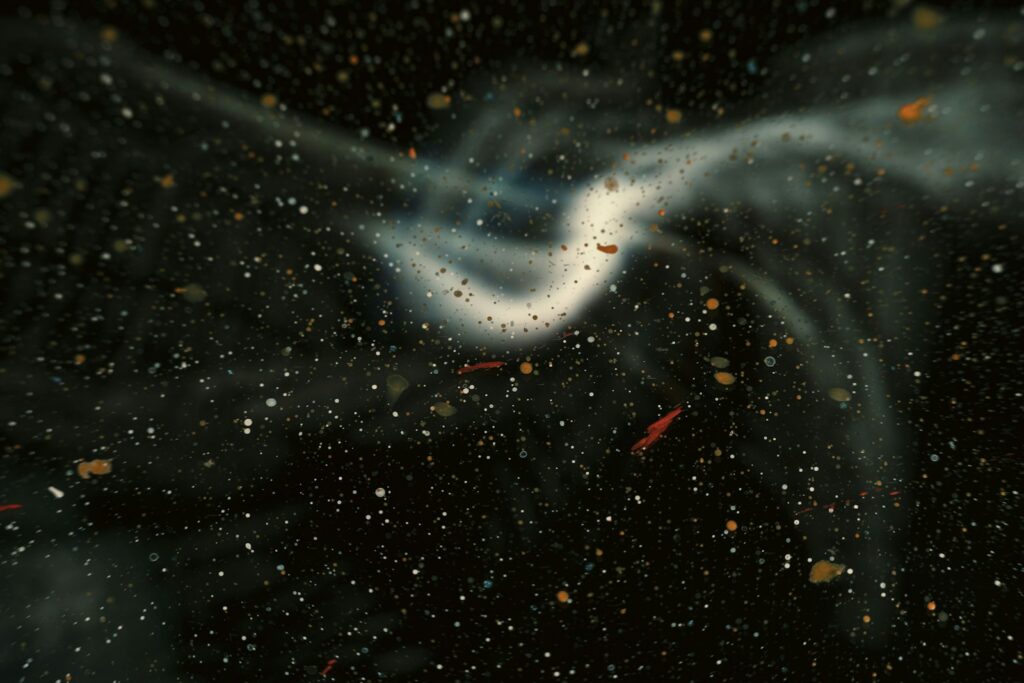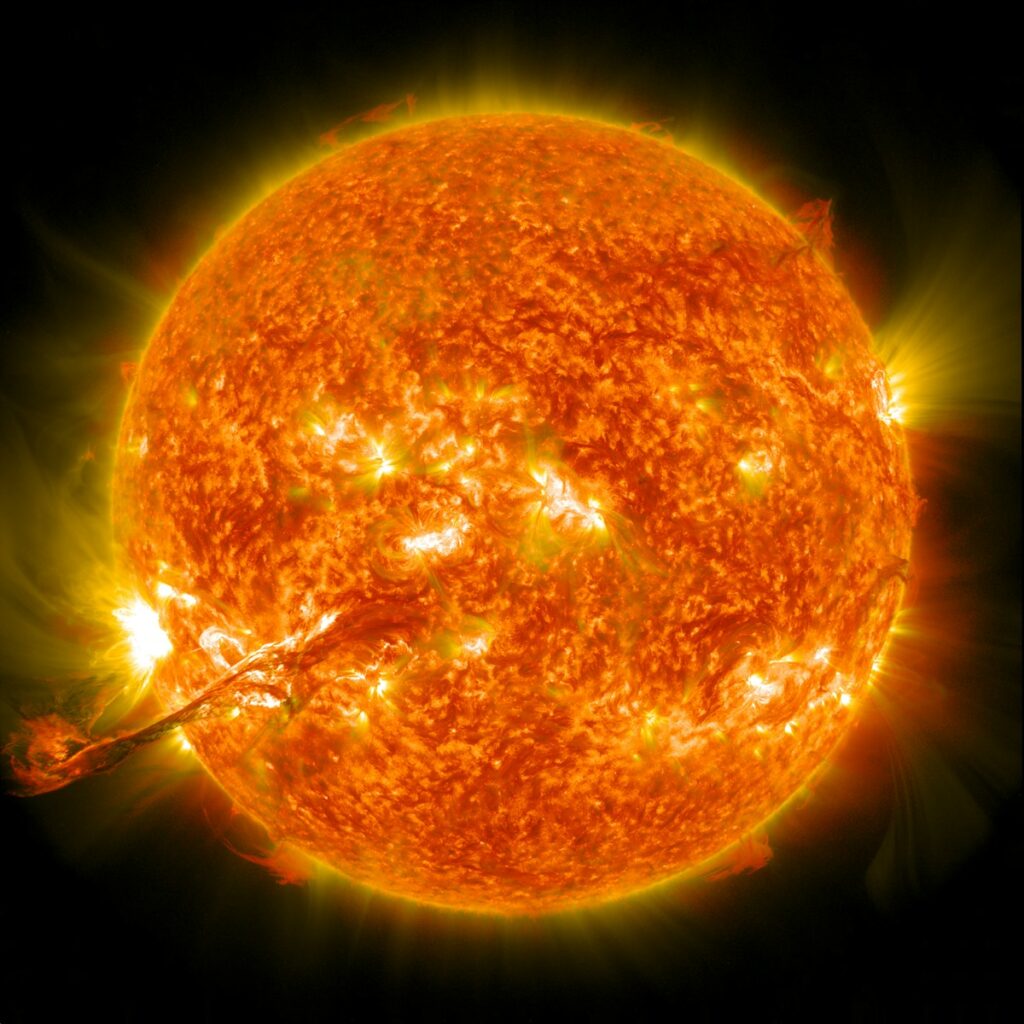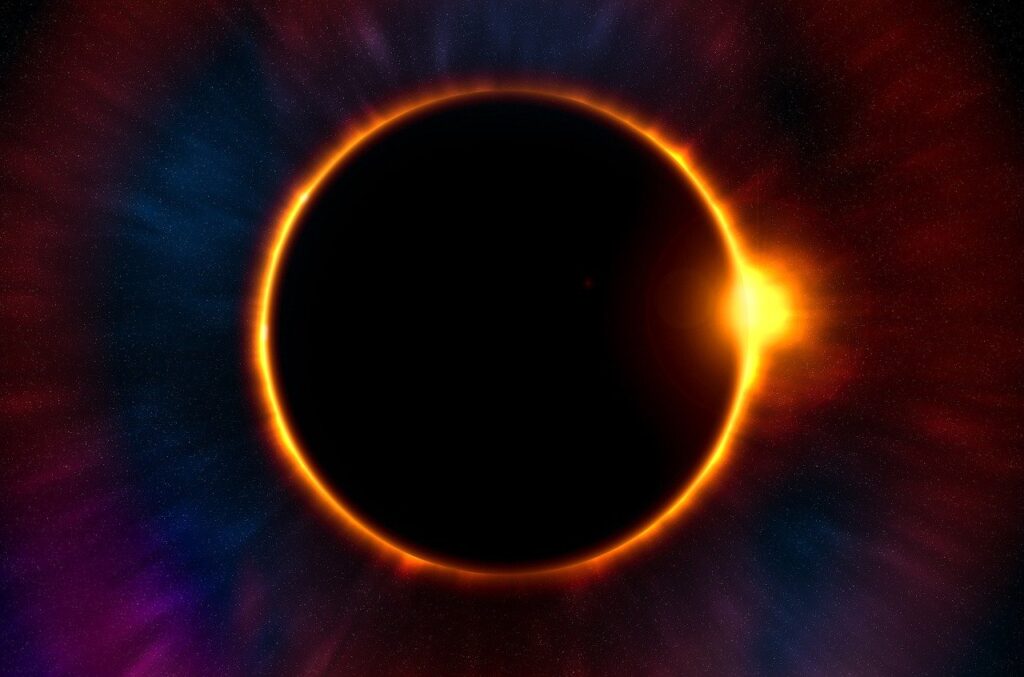
The night sky, a canvas of twinkling diamonds, has captivated humanity since time immemorial. We look up at these distant points of light, imagining them as serene, constant beacons, symbols of hope, guidance, and endless wonder. From ancient myths that wove stories around constellations to their crucial role in early navigation and the marking of seasons, stars have always been glorified as immutable, divine entities.
But what if we told you that behind this seemingly tranquil celestial façade lies a universe of unimaginable violence, profound transformations, and astonishing secrets? The “stars” we so casually admire are not just static specks; they are colossal, dynamic powerhouses, living out lives far more dramatic and destructive than any Hollywood epic could ever depict. Their existence is a relentless battle against gravity, a furious dance of nuclear fusion that ultimately leads to some of the most cataclysmic events in the cosmos.
Prepare to have your perceptions of the universe fundamentally shifted. We’re diving deep into the true nature of these cosmic wonders, pulling back the curtain on the scientific realities that reveal their shocking “dark sides.” Get ready to explore twelve astronomical entities we thought we knew, only to discover their hidden, often terrifying, truths.
1. **The Luminous Lie: Stars as Deceptively Fixed Points of Light** For millennia, humanity has relied on stars as unwavering markers in the night sky. Ancient civilizations across the globe meticulously charted their positions, grouping them into iconic constellations like Leo the lion, as depicted by Johannes Hevelius in 1690. These “fixed stars” were believed to be permanently affixed to a heavenly sphere, immutable and constant, serving as cornerstones for religious practices, divination, and the very fabric of early calendars.
The reality, however, is a fascinating deception orchestrated by the immense scale of the cosmos. While countless stars are indeed visible to the naked eye, appearing as stable points of light, this perceived immutability is solely due to their staggering distances from Earth. We observe them from such a vast remove that their inherent movements, often at incredible speeds, become imperceptible to our terrestrial vantage point over human lifetimes.
It’s a testament to the grand illusion of space that only about 4,000 of the estimated 10^22 to 10^24 stars in the observable universe are even visible without aid, and all of these are nestled within our very own Milky Way galaxy. This makes our common perception of stars as static, sparkling gems a glorious but profound misunderstanding. They are, in fact, dynamic, evolving entities, constantly in motion, betraying their calm appearance.
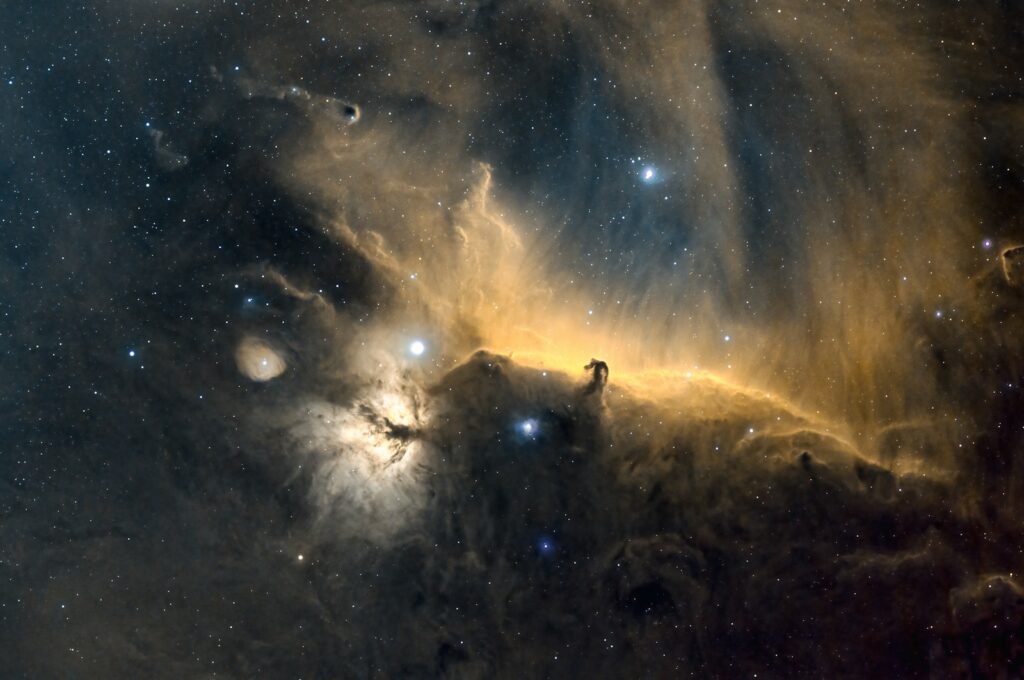
2. **The Cosmic Crucible: Violent Birth of a Star** We often picture the birth of a star as a gentle, serene gathering of cosmic dust, almost a magical ignition of light in the darkness. But the truth of star formation is far more intense, a spectacular display of cosmic violence driven by one of the most fundamental forces in the universe: gravity. It all begins in regions of space known as molecular clouds, vast nurseries consisting mostly of hydrogen, helium, and a smattering of heavier elements.
These clouds, despite being denser than a vacuum chamber, are still incredibly diffuse. Yet, within them, gravitational instability can arise, often triggered by powerful external forces like radiation from massive stars, expanding bubbles in the interstellar medium, or even galactic collisions. Once a region within this cloud reaches a critical density, satisfying the criteria for what scientists call “Jeans instability,” it succumbs to its own overwhelming gravitational force and begins an unstoppable, inward collapse.
As this colossal cloud collapses, denser conglomerations of dust and gas emerge, dramatically named “Bok globules.” The transformation from gravitational potential energy into heat is immense, causing the temperature within these collapsing spheres to skyrocket. This violent conversion of energy is what ultimately leads to the formation of a protostar at the core, a pre-main-sequence star primarily powered not by fusion, but by the raw, untamed force of gravitational contraction.
Furthermore, these nascent protostars are far from peaceful. They often lash out with powerful jets of gas, streaming along their axis of rotation. These energetic outflows, sometimes visible as “Herbig–Haro objects,” play a crucial role in reducing the angular momentum of the collapsing star. In combination with the radiation from neighboring massive stars, these fierce jets can violently sweep away the surrounding molecular cloud from which the star was born, clearing its path into stellar existence.
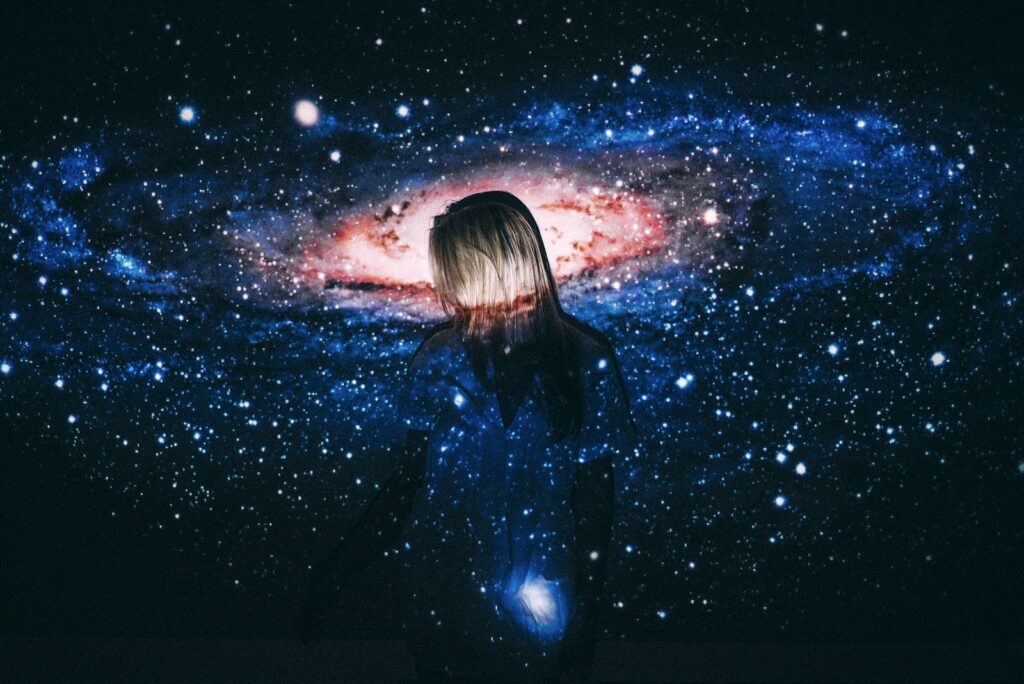
3. **The Silent Shredders: Stellar Winds and Mass Loss** When we gaze upon a star, especially our own Sun, we envision a stable, enduring source of light and warmth, a bastion of cosmic reliability. While it’s true that stars spend the vast majority of their existence in a main-sequence phase, steadily fusing hydrogen into helium, this period is anything but static. Even during this seemingly tranquil phase, stars are engaged in a relentless, silent shedding, continuously losing material into the cold vacuum of space.
This phenomenon is known as a “stellar wind,” a constant outflow of particles that stream away from the star’s surface. For a star like our Sun, this mass loss might seem negligible; it sheds about 10^-14 solar masses each year, equating to roughly 0.01% of its total mass over its entire lifespan. It’s a slow, almost imperceptible erosion, but it’s a fundamental part of its stellar existence, happening every second of its billions of years.
However, for the true behemoths of the cosmos—the most massive stars—this silent shredding escalates into a dramatic and significant force. These stellar giants can lose an astonishing 10^-7 to 10^-5 solar masses annually. Such prodigious rates of mass loss profoundly impact their evolution, altering their properties and dictating their ultimate fate. Imagine shedding the equivalent of several Earths every year!
The most extreme examples of this cosmic erosion involve stars that begin with more than 50 solar masses. These stellar titans can lose over half of their entire mass while they are still in their main sequence phase, fundamentally reshaping themselves long before they approach their dramatic conclusions. This continuous, unseen expenditure of their very being is a stark reminder that even the most glorious stars are constantly diminishing.
4. **The Red Giant’s Rage: When Our Sun’s Future Gets Scary** Our Sun, the life-giver of our solar system, is currently in its prime, a stable main-sequence star. But its future, and indeed the future of all stars with at least 0.4 solar masses, involves a transformation that is anything but peaceful—it will swell into a “red giant.” This phase marks a dramatic departure from the steady hydrogen fusion in the core that characterizes its current existence, initiating a sequence of events that can only be described as a cosmic rampage.
The process begins when a star exhausts the supply of hydrogen fuel in its core. Unable to sustain fusion there, the core contracts, while hydrogen fusion ignites in a shell surrounding this depleted helium core. This new energy source causes the star’s outer layers to expand enormously and cool significantly, leading to its characteristic reddish hue and immense size. It’s a stellar metamorphosis that vastly alters its appearance and internal dynamics.
For Earth, the implications of our Sun becoming a red giant are nothing short of terrifying. In approximately 5 billion years, as it enters this helium-burning phase, our local star will expand to a maximum radius of roughly 1 astronomical unit—that’s about 150 million kilometers, or 250 times its current size. This expansion means it will engulf Mercury, Venus, and possibly even Earth, rendering our planet a desolate, vaporized cinder within its swollen, fiery embrace.
Moreover, this aggressive expansion isn’t merely about size; it’s accompanied by significant mass loss. Our Sun is projected to lose approximately 30% of its current mass during this red giant phase, violently ejecting material into space. This stellar tantrum is a stark reminder that the serene star we adore today harbors a future capable of apocalyptic destruction for its planetary companions.
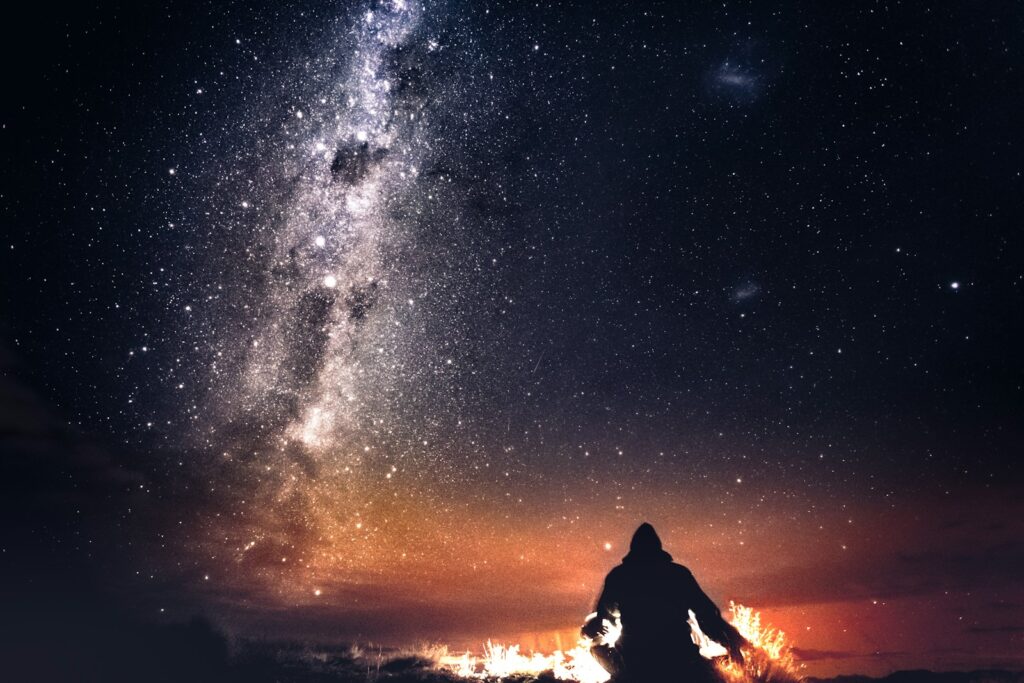
5. **The Helium Heartbreak: Explosive Flashes and Degenerate Cores** Just when you thought a star’s evolution couldn’t get more dramatic, the red giant phase introduces even more shocking twists. Once a star like our Sun becomes a red giant, its core, now primarily helium, continues to heat and increase in mass due to the ongoing hydrogen shell fusion. For stars up to about 2.25 solar masses, something extraordinary, and rather violent, happens: the helium core becomes “degenerate.”
A degenerate core is a strange and extreme state of matter, where the density is so immense that quantum mechanical pressure, rather than thermal pressure, prevents further collapse. In this state, the core behaves in an unusual way: its temperature can rise without immediately expanding, which typically regulates nuclear reactions. This creates a volatile situation, a ticking time bomb waiting for the right conditions.
The explosion, when it comes, is known as a “helium flash.” When the temperature in the degenerate helium core finally reaches the critical point for helium fusion to ignite, it does so explosively and runaway-fashion because the degenerate matter does not expand and cool. This sudden, uncontrolled ignition releases an incredible burst of energy, momentarily making the star’s luminosity comparable to an entire galaxy. It is a moment of intense, internal cosmic fireworks.
Following this dramatic helium flash, the star undergoes rapid adjustments, shrinking in radius and significantly increasing its surface temperature. It then settles into a new, more stable phase of helium core fusion, moving onto what astronomers call the “horizontal branch” of the Hertzsprung-Russell diagram. This entire sequence reveals that even the middle-aged life of a star is punctuated by moments of shocking, explosive transformation, far from the steady burn we might imagine.
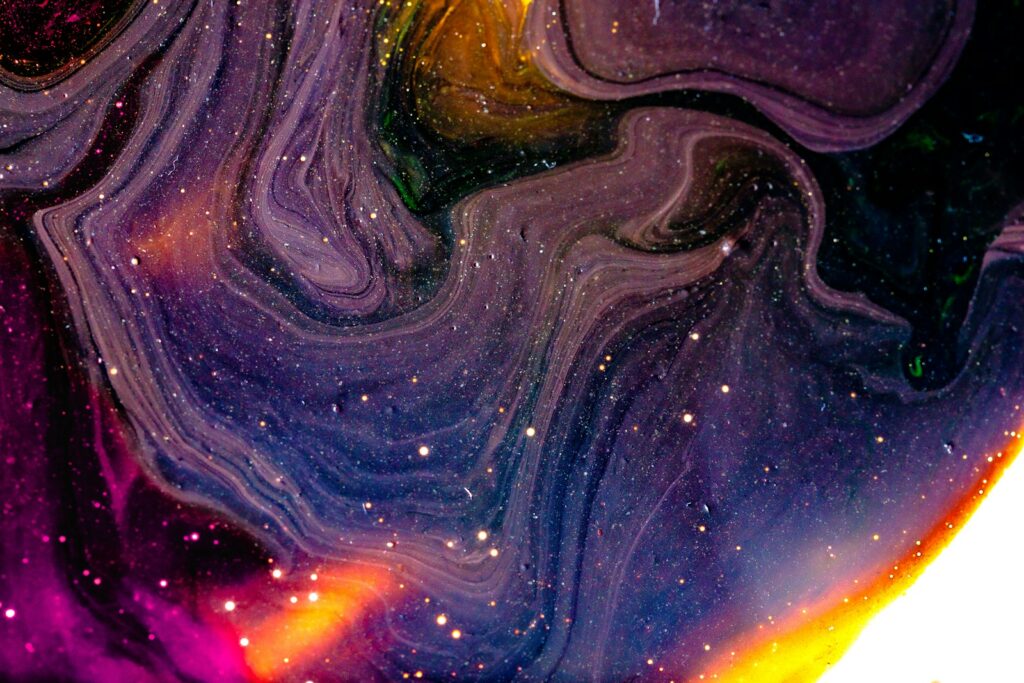
6. **The Asymptotic Annihilation: Thermal Pulses and Nebulae’s Violent Origin** The cosmic saga of stars continues to surprise us with its dramatic flair, even after the helium in their cores has been depleted. For stars that have passed through the helium core fusion stage, their evolution leads them to another profound transformation: the “Asymptotic Giant Branch” (AGB). Here, the star, having already been a red giant, reignites its fury, engaging in helium fusion in a shell surrounding its now inert carbon-oxygen core.
This AGB phase is characterized by an often overlooked, yet incredibly violent, internal struggle: “thermal pulses.” These are instabilities within the star’s core where the luminosity rapidly varies, and the star experiences episodes of immense energy output. Imagine a star’s inner workings sporadically erupting, causing its outer layers to heave and buckle with sudden, powerful surges.
During these tumultuous thermal pulses, the star experiences prodigious “mass loss.” It violently ejects significant portions of its outer atmosphere into the surrounding space, forming what we famously know as a “planetary nebula.” Despite their serene, often breathtaking beauty captured in astronomical images, these nebulae are not tranquil clouds; they are the literal expelled remains of a dying star, flung outwards in moments of extreme instability.
The sheer scale of this ejection is astounding. An AGB star can lose anywhere from 50% to 70% of its total mass in this process, enriching the interstellar medium with vital elements like carbon and oxygen. These are the very “star stuff” atoms that ultimately form future generations of stars, planets, and even life itself. So, while beautiful, a planetary nebula is a stark monument to a star’s agonizing, violent death throes, leaving its core exposed and ready for its final, cooling fade.

7. **The Supergiant Spectacle: The Intense Life and Fusion Frenzy of Massive Stars**Massive stars, typically those with a minimum mass of approximately 8 solar masses (M☉), embark on an evolutionary journey far more intense and dazzling than their smaller counterparts. Unlike low and intermediate mass stars that eventually settle into helium-burning, these cosmic behemoths live fast and die even faster, burning through their fuel at an astounding rate. Their sheer size and immense gravitational pressures lead to a spectacular, albeit short-lived, existence that reshapes their surroundings.
After exhausting the hydrogen fuel in their cores, these stars don’t just become red giants; they transform into supergiants. Within their cores, the furnace rages hotter and hotter, enabling them to fuse elements far heavier than helium. Imagine an “onion-like” structure of burning shells, each fusing successively heavier elements, from carbon and oxygen all the way up to silicon and, ultimately, iron. This multi-layered nuclear alchemy is a testament to the extreme conditions found deep within these stellar titans.
This voracious consumption of fuel means their time on the main sequence is fleeting. While our Sun will shine for 10 billion years, a star 10 times more massive might only last a few tens of millions of years. Their lives are a constant battle against gravity, sustained by ever more complex and energetic fusion processes, culminating in a dramatic and often cataclysmic end that profoundly impacts the galaxy around them. These are truly the rock stars of the cosmos!

8. **The Cosmic Cataclysm: The Unfathomable Power of Supernovae**If massive stars live dramatically, they die even more so! The grand finale for many of these stellar giants is arguably one of the most violent and spectacular events in the universe: a supernova. This isn’t just a star fading away; it’s an explosion so powerful that for a brief period, a single supernova can outshine an entire galaxy, releasing an amount of energy equivalent to what our Sun will produce over its entire 10-billion-year lifespan. It’s truly mind-blowing to think about.
A supernova occurs when a massive star, typically one with a core mass between 8 and 30 solar masses, exhausts its nuclear fuel and can no longer generate the outward pressure needed to resist its own immense gravitational pull. Without the outward push of fusion, the star’s core collapses inwards in mere seconds, reaching incredible densities and temperatures. This implosion then rebounds off the super-dense core, sending a colossal shockwave tearing through the star’s outer layers, blowing them off into space in a breathtaking, fiery cosmic burst.
These aren’t just pretty light shows; supernovae are vital cosmic factories! The extreme conditions during the explosion create and scatter heavier elements—elements like gold, silver, and uranium—that cannot be forged in the less violent lives of smaller stars. This process, known as stellar nucleosynthesis, returns chemically enriched material to the interstellar medium, providing the building blocks for new stars, planets, and even life itself. It’s a violent act of creation, ensuring that the universe always has fresh “star stuff” to play with.
Humanity has been witnessing these shocking stellar deaths for centuries, even before we fully understood their nature. Chinese astronomers, in 185 AD, were the first to observe and document a supernova, now known as SN 185. The brightest stellar event in recorded history, SN 1006, was seen by observers across the globe, including the Egyptian astronomer Ali ibn Ridwan. And, of course, the iconic Crab Nebula, a celestial masterpiece, is the direct remnant of SN 1054, also observed by Chinese and Islamic astronomers. These ancient observations remind us that the cosmos has always put on a show!
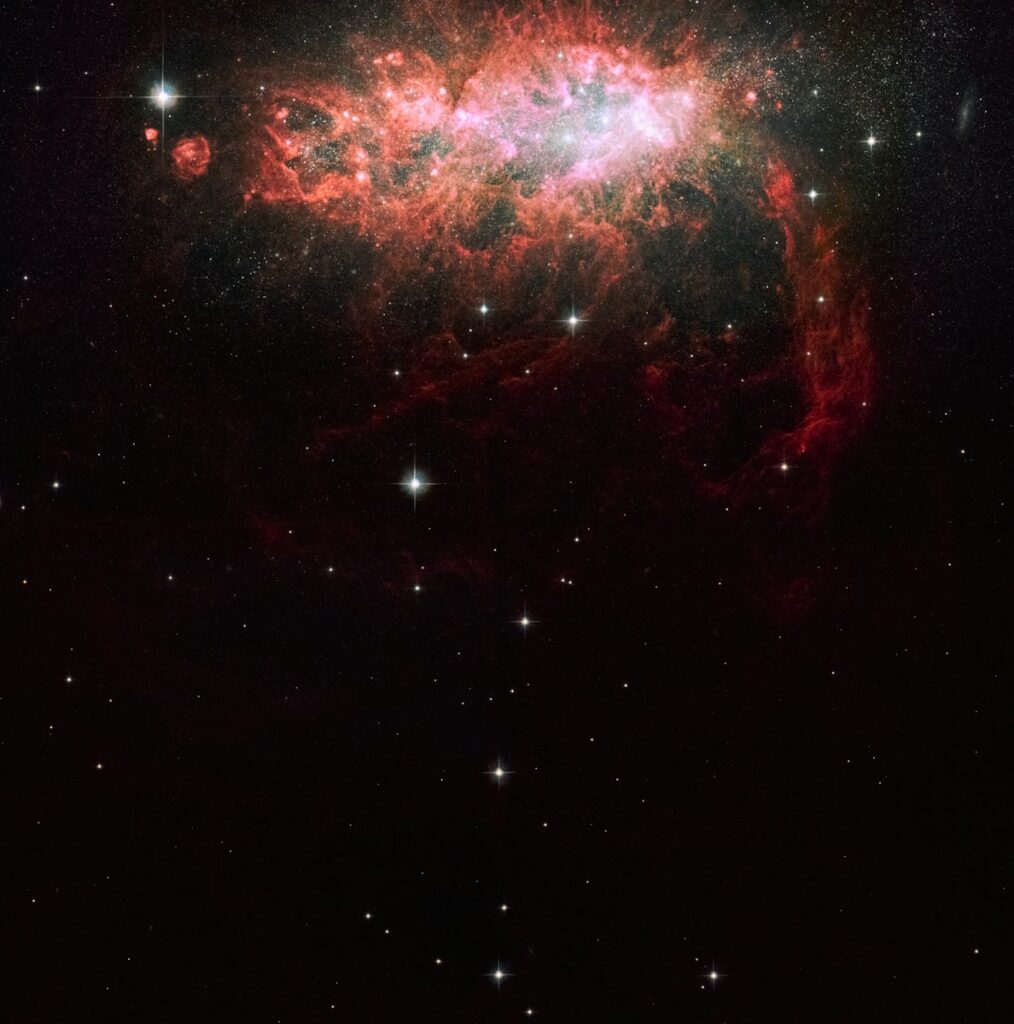
9. **The Ultra-Dense Remnant: The Mind-Bending Reality of Neutron Stars**What happens after a supernova? For stars with initial masses between approximately 8 and 30 solar masses, the core doesn’t just vanish; it compresses into one of the most extreme objects in the universe: a neutron star. Imagine taking an object with more mass than our Sun and squeezing it down to the size of a city, roughly 20 kilometers (12 miles) in diameter. That’s the mind-bending reality of a neutron star – unbelievably small, yet unbelievably dense.
This incredible density arises during the core collapse of a massive star. The gravitational force is so immense that it overcomes the electron degeneracy pressure that supports white dwarfs. Protons and electrons are literally forced together to form neutrons. The entire core becomes a gigantic atomic nucleus, composed almost entirely of neutrons, held together by an even stronger force: neutron degeneracy pressure. It’s a state of matter unlike anything we typically encounter on Earth, defying our everyday intuitions about solids and liquids.
And if their density wasn’t wild enough, neutron stars are often spinning incredibly fast, sometimes hundreds of times per second, and possess magnetic fields trillions of times stronger than Earth’s. These rapidly rotating, highly magnetized neutron stars are what we observe as “pulsars,” emitting beams of radiation that sweep across space like a cosmic lighthouse. When these beams point towards Earth, we detect regular pulses, a rhythmic “ticking” from these incredibly violent and energetic cosmic remnants. They truly are the universe’s most extreme timekeepers!

10. **The Event Horizon: The Unseen Depths of Black Holes**But wait, there’s a fate even more terrifying and enigmatic than a neutron star! For the truly gargantuan stars, those starting with more than approximately 30 solar masses, their death promises the ultimate obliteration of their former selves, giving birth to a black hole. These are not just extremely dense objects; they are regions of spacetime where gravity is so intense that nothing, not even light, can escape their clutches once it crosses a boundary known as the event horizon.
When the core of such a supermassive star collapses, even neutron degeneracy pressure isn’t enough to halt the inward crush of gravity. The collapse continues indefinitely, squeezing all of the core’s mass into an infinitely small, infinitely dense point called a singularity. The event horizon is the “point of no return” surrounding this singularity – cross it, and you’re lost to the universe forever, your journey into the unknown irreversible. It’s a cosmic one-way street!
Black holes represent the most profound “dark side” of stellar evolution, consuming light and matter, making them invisible to direct observation. We detect them by observing their gravitational influence on nearby stars and gas, or by the intense X-rays emitted as matter spirals into their hungry maw. These mysterious cosmic monsters, born from the death throes of the most massive stars, continue to challenge our understanding of physics and the very fabric of reality. They are truly the ultimate cosmic secrets, hidden in plain sight.

11. **The Stellar Cemetery: The Diverse Fates of Stellar Remnants**So, where do all stars end up? The ultimate fate of a star is fundamentally determined by its initial mass, leading to a celestial “cemetery” filled with a diverse array of stellar remnants. From the relatively tranquil, albeit still exotic, white dwarfs to the hyper-dense neutron stars and the mind-bending black holes, each remnant tells a story of a star’s life and its dramatic departure from the active universe.
For stars with initial masses up to about 8 solar masses, which include our Sun, the journey culminates in a white dwarf. After shedding their outer layers to form a planetary nebula, what’s left is a compact, incredibly dense core of carbon and oxygen, supported by electron degeneracy pressure. These stellar embers no longer undergo fusion; they simply cool down over billions of years, slowly fading into cosmic obscurity. They are the quiet, dignified retirees of the stellar world, carrying the legacy of their luminous past.
As we’ve seen, the more massive stars leave behind the truly extreme remnants. Stars initially between 8 and 30 solar masses leave behind neutron stars, supported by the even stronger neutron degeneracy pressure after a supernova explosion. And for the heaviest stars, exceeding 30 solar masses, the end game is the formation of a black hole, where gravity reigns supreme and nothing escapes. These varying endpoints demonstrate the incredible range of physical conditions and cosmic forces at play throughout a star’s evolutionary journey.

12. **The Cosmic Dance: The Profound Influence of Binary Star Systems**Now, here’s a twist: many stars don’t lead solitary lives! It turns out that a significant proportion, perhaps even the majority, of stars are not lone wanderers but are actually part of “binary star systems,” where two stars orbit a common center of mass. Some systems even host three or more stars, creating complex celestial ballets that profoundly influence their individual evolutions and the wider cosmic landscape. It’s a grand, gravitational dance across the universe!
The formation of these binary systems is intimately linked to the violent birth of stars themselves. As a gas cloud collapses under its own gravity to form stars, it must shed a considerable amount of angular momentum. One of the primary ways this happens is through the fragmentation of the cloud into multiple stars, effectively distributing that angular momentum among the orbiting components. This primordial separation then shapes their early interactions, determining if they become tightly bound or more widely spaced.
But the story doesn’t end at birth. Once formed, the gravitational interactions between stars in binary systems can significantly impact their evolution. In young stellar clusters, close encounters with other stars can cause “soft” binaries (those with wider separations) to split apart, while “hard” binaries (those that are more tightly bound) can become even more closely intertwined. This dynamic interplay leads to the observed distributions of binary star separations we see across the cosmos.
These binary and multiple star systems are not just fascinating curiosities; they are crucial to our understanding of stellar physics. The gravitational interactions, especially in close binaries, can lead to mass transfer between the stars, dramatically altering their individual evolutionary paths and leading to unique phenomena like X-ray binaries or Type Ia supernovae (though the latter is for white dwarfs). Studying these intricate celestial partnerships provides invaluable insights into the lives, deaths, and enduring mysteries of stars.
From deceptively serene points of light to the heart of unimaginable cosmic violence, stars are far more complex and captivating than their glittering appearance suggests. They are the universe’s ultimate alchemists, forging the elements of life, and its most dramatic performers, ending their lives in cataclysmic explosions or retreating into the enigmatic embrace of black holes. The more we learn, the more we realize that the true “dark side” of these celestial bodies isn’t sinister, but simply a profound, awe-inspiring testament to the raw, untamed power and beauty of the cosmos. So next time you gaze up at the night sky, remember the shocking, magnificent truths hidden behind every twinkling star.

